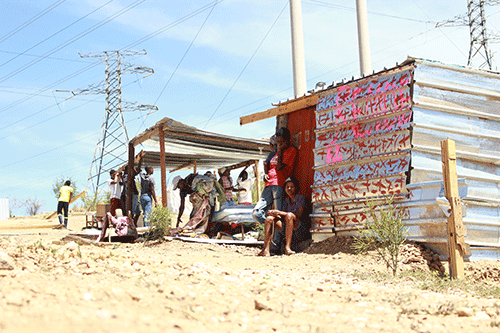A host of socio-economic factors still keep thousands of Namibians in shacks.
These include the rapid and constant increase over the past years in the density of informal settlements due to rural-urban migration, an unaffordable average house price, and the failure of State institutions to address the escalating housing backlog,
This was confirmed by the Namibia Statistics Agency (NSA), which on Wednesday launched a report revealing that about 25% of the country’s dwelling units are still impoverished housing units or shacks.
The census mapping report is expected to provide some preliminary indicators to contribute to the evaluation of the different plans that the country has put in place in preparation for the main census in 2023.
The mapping exercise, undertaken between October 2019 and February 2021, indicated that there were 507 249 dwelling units in Namibia, of which 36.6% are detached houses, while a significant proportion of
about 25% are shacks, with the highest percentage situated in the Khomas region.
Shacks are often hastily build with scrap material in unproclaimed areas with no municipal services, faraway from opportunities and services. It often provides little security against criminals and adverse weather conditions.
According to the report, 42.6% of households countrywide have no toilet facilities, and this is common in rural areas at 64.6%, compared to urban areas at 22.6%.
In terms of water supply, the census showed that about 17% of households rely on water from unprotected wells for cooking, with the highest proportion recorded in the Ohangwena and Zambezi regions.
About 53% of households in Namibia use firewood as the main source of energy for cooking, and only 31% of the households use electricity from mains, the report showed.
The census mapped 965 265 structures throughout the country, representing households and all other structures. A total of 529 734 structures were situated in urban areas, while 435 474 were located in rural areas.
Meanwhile, a report released earlier this year, called Namibia’s 30 Years Developmental Journey, showed that there has been a rapid increase over the past years in the density of informal settlements due to rural-urban migration. The report singled out the Khomas and Erongo regions as major destination regions, attracting migrants from around the country. This high rate of urban migration presents a challenge to local authorities by hampering the effective delivery of access to basic services, especially in the informal sector.
The same report showed that some of the achievements made in terms of sanitation are attributed to increased settlement areas being declared. The declaration of settlement areas has been credited for better management and control of human settlements, and to administer health and welfare matters in these areas.
The number of settlements in Namibia declared increased to 51 by 2019 from 29 settlements in 1990.
Housing crisis
National Housing Enterprise CEO
Gisbertus Mukulu recently observed that approximately 70% of the Namibian population is unlikely to access and afford conventional home loan facilities offered by the financial market. The same population segment can also not access urban freehold land and professional services, which forms part of basic requirements to ultimately own a decent home.
“It is our strong conviction that if the channelling of resources to the NHE is improved, the current situation could gradually improve,” the NHE CEO stated.
At a recent housing handover, Mukulu noted that the NHE board and management has taken into consideration the importance of realigning the institution’s housing delivery strategies to the reality on the ground.
– Additional reporting by Nampa/Xinhua


